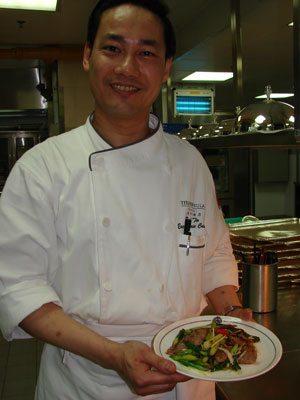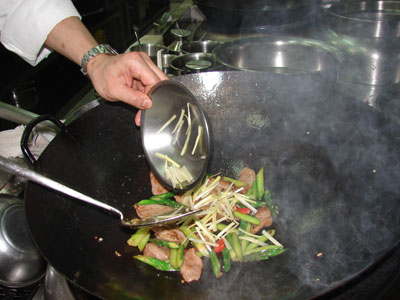What’s Cooking in…Shanghai
This item appears on page 60 of the July 2012 issue.
Shanghai is an amazing city, with more skyscrapers than New York City and many more being built. Also amazing is the luxurious hotel The Peninsula Shanghai (No 32 The Bund, 32 Zhongshan Dong Yi Road, Shanghai 200002, The People’s Republic of China; phone, in the US, 866/382-8388), where John and I were hosted in April 2012.
The Peninsula Hotels are considered some of the world’s best. Through Dec. 31, 2012, The Peninsula Shanghai is offering a “Travel in Style” package with a rate of RMB2,800 (near $440) per night, for a minimum of two nights, that includes daily American breakfast for two, round-trip airport transfers by limousine and unlimited free laundry and clothes pressing.
The Peninsula Hotels have a program called The Academy whereby guests can learn about the local culture and food. We inquired about their culinary program in Shanghai and were told that it was available only at certain times of the year.
When it is scheduled, guests can participate in private cooking classes with the hotel’s chefs, take a master class in preparing dim sum at Yi Long Court or attend a tasting session of Chinese wines, each for about $150 per person, depending on the class and offering. It usually includes a meal.
None of those options were available while we were there, but they offered to have Chef Dicky To, the Executive Chef Chinese Cuisine for the Peninsula’s Yi Long Court restaurant, demonstrate one of his signature recipes at no cost.
While Chef Dicky was demonstrating one of his favorites, stir-fried sliced duck breast with asparagus and chives, he told us that Cantonese was his favorite Chinese cuisine because, he said, “It is quick, easy and full of flavor.”
Speaking in excellent English, as did all of the hotel’s staff, he said, “There are two main methods for preparing Cantonese cuisine: stir-frying and steaming.”
Chef Dicky shared Chinese eating customs that are different than those in the West. Traditionally, everyone gets a small bowl of rice and a plate. The rest of the food is placed on the table family-style, with everyone using their chopsticks to get the food from the serving dishes to their bowls or plates.
Most Chinese restaurants in China have several small dining rooms besides the general seating area, so diners can have a more private dining experience in a family-like atmosphere. The Peninsula’s Yi Long Court restaurant has seven private dining rooms.
The restaurant’s main dining area is based on a 1920s home of a rich Shanghainese merchant, with mahogany floors, fireplaces, comfortable sofas and velvet upholstery, creating a welcoming residential feel.
3 tbsp soy sauce
1 tsp chicken powder (bouillon)
1 tbsp water
¼ tsp sugar
1 tbsp of potato starch or cornstarch
dash of salt
Mix the above ingredients for the seasoning sauce and set aside.
1 tbsp water
dash of salt
dash of sugar
5 stalks asparagus, sliced in 2-inch diagonal pieces
5 ounces sliced duck breast meat
1 tbsp finely chopped garlic
5 scallions, julienned
½ cup finely chopped chives
½ red bell pepper, julienned


